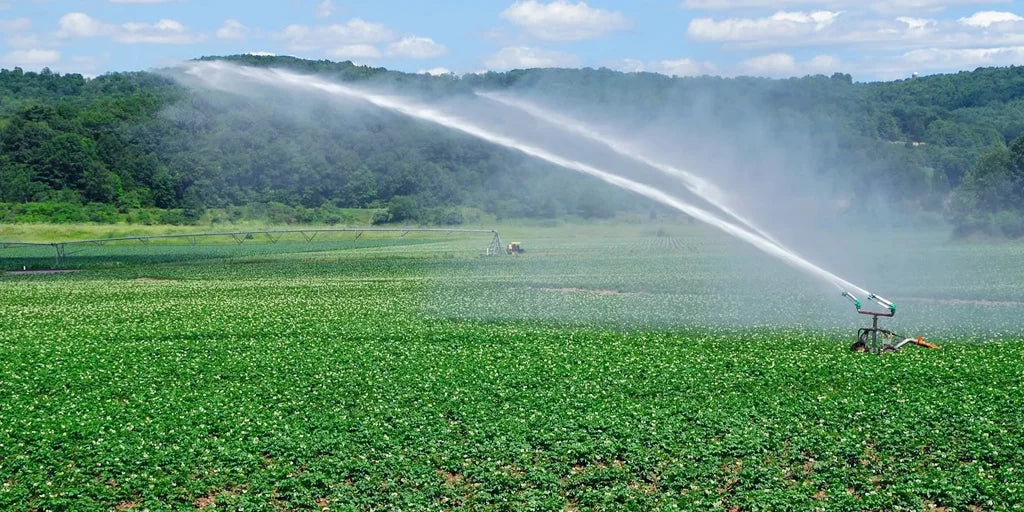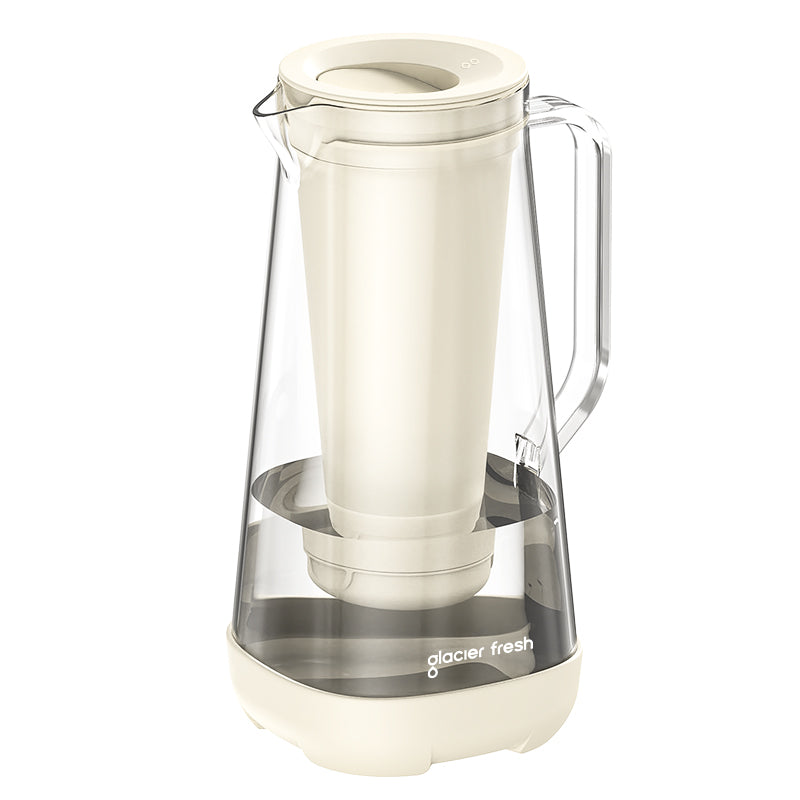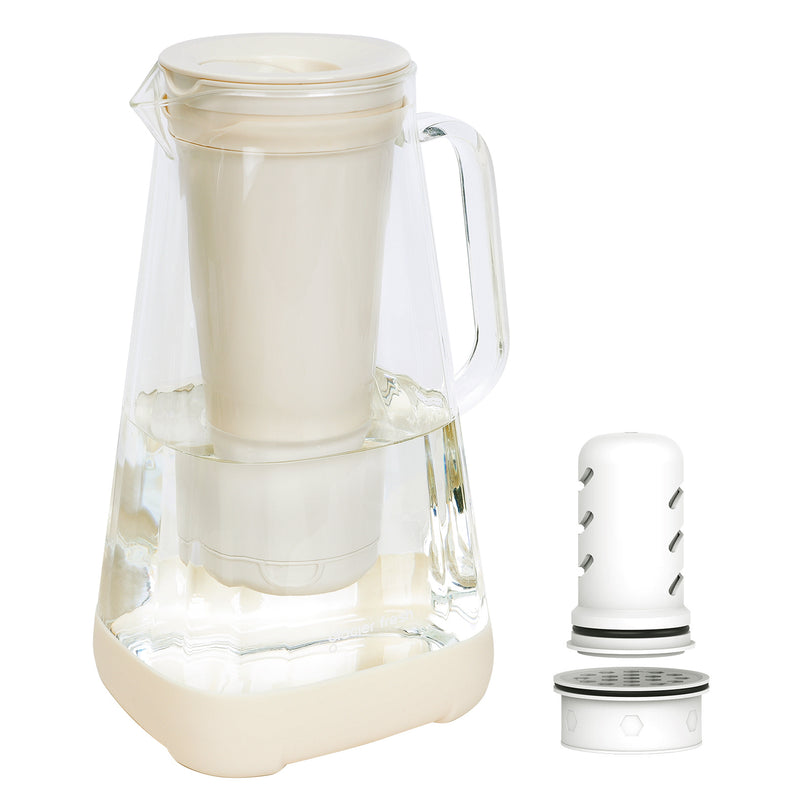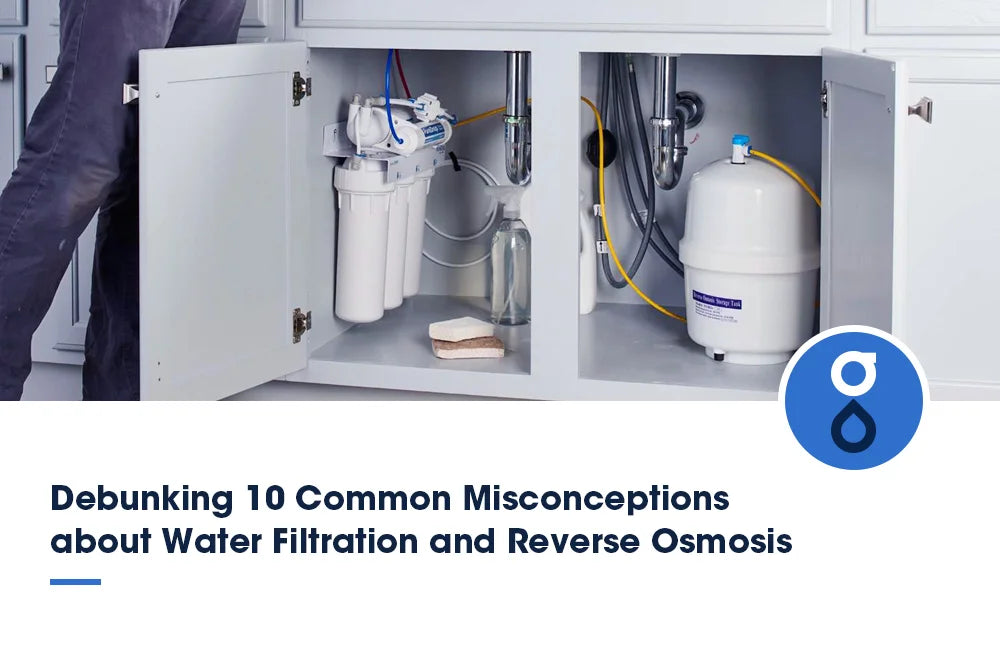Table of Contents:
Der Wasser-Nahrungs-Nexus: Den Zusammenhang verstehen
Der Wasser-Fußabdruck von Lebensmitteln
Direkter und indirekter Wasserfußabdruck in der Lebensmittelproduktion
Strategien zur Reduzierung des Wasserfußabdrucks in der Lebensmittelproduktion
FAQs
Abschluss
Entdecken Sie, wie sich Ihre Ernährung auf die globalen Wasserressourcen auswirkt – von der Dusche bis zum Teller. Ihre Lebensmittelauswahl spielt eine wichtige Rolle für ökologische Nachhaltigkeit und Umweltschutz. Sie können einen positiven Einfluss ausüben, indem Sie den Wasserfußabdruck von Lebensmitteln verstehen und sich über den direkten und indirekten Wasserfußabdruck in der Lebensmittelproduktion informieren. Entdecken Sie Strategien zur Reduzierung des Wasserfußabdrucks in der Lebensmittelproduktion und zum Wasserschutz. Ihre Entscheidungen sind für die Zukunft unserer Wasserressourcen wichtiger als Sie denken.
Der Wasser-Nahrungs-Nexus: Den Zusammenhang verstehen

Mit der Wahl Ihrer Lebensmittel beeinflussen Sie die Wasserressourcen direkt – von der Dusche bis zum Teller. Die Wahl nachhaltig angebauter Produkte unterstützt nachhaltige landwirtschaftliche Praktiken, die den Wasserschutz in den Vordergrund stellen. Techniken wie Tröpfchenbewässerung und Bodenschutz tragen dazu bei, den Wasserverbrauch zu minimieren und so die Umweltbelastung der Lebensmittelproduktion zu verringern. Wenn Sie wissen, woher Ihre Lebensmittel in der Lieferkette stammen, können Sie fundierte Entscheidungen treffen, die die Nachhaltigkeit Ihrer Lebensmittel fördern.
Die Unterstützung nachhaltiger Landwirtschaft kommt nicht nur der Umwelt zugute, sondern sichert auch die Lebensmittelversorgung für die Zukunft. Wenn Landwirte Strategien zur Wassereinsparung umsetzen, tragen sie dazu bei, diese lebenswichtige Ressource für kommende Generationen zu erhalten. Ihre Lebensmittelauswahl beeinflusst maßgeblich die Nachfrage nach verantwortungsvoll produzierten Produkten und die Praktiken der gesamten Lieferkette. Indem Sie sich aktiv für nachhaltig erzeugte Lebensmittel entscheiden, tragen Sie zu einem gesünderen Planeten bei und fördern eine nachhaltigere Zukunft für alle.
Der Wasser-Fußabdruck von Lebensmitteln
Was ist ein Wasserfußabdruck?
Um die Auswirkungen unserer Ernährung auf die Wasserressourcen zu verstehen, ist es wichtig, den Wasserfußabdruck von Lebensmitteln zu verstehen. Der Wasserfußabdruck stellt die Gesamtmenge an Süßwasser dar, die für die Herstellung der von uns konsumierten Waren und Dienstleistungen verbraucht wird. Dieses Konzept beleuchtet die Umweltauswirkungen unseres Konsumverhaltens und die Bedeutung nachhaltiger landwirtschaftlicher Praktiken für Wasserschutz und Ressourcenmanagement. Indem wir den Wasserfußabdruck von Lebensmitteln berücksichtigen, können wir zu einer nachhaltigeren Wassernutzung beitragen und umweltfreundliche Praktiken unterstützen.

Verschiedene Kategorien von Wasser-Fußabdrücken
Um einen tieferen Einblick in die Auswirkungen der Lebensmittelauswahl auf die Wasserressourcen zu erhalten, ist es wichtig, die verschiedenen Kategorien des Wasserfußabdrucks im Zusammenhang mit der Lebensmittelproduktion zu untersuchen. Wassereinsparung spielt eine entscheidende Rolle bei der Minimierung des Wasserfußabdrucks von Lebensmitteln.
Um die Auswirkungen verschiedener Lebensmittel auf den Wasserverbrauch zu analysieren, ist es wichtig, den Wasserverbrauch in Landwirtschaft, Verarbeitung und Transport zu verstehen. Der Wasserverbrauch variiert je nach Lebensmittelart, wobei manche deutlich mehr Wasser benötigen als andere. Die nachhaltige Wassernutzung in der Lebensmittelproduktion ist entscheidend, um die zukünftige Wasserverfügbarkeit für Landwirtschaft und Haushalt sicherzustellen. Wenn Sie sich dieser Kategorien und ihrer Auswirkungen bewusst sind, können Sie fundierte Entscheidungen treffen, um Ihren Wasserverbrauch zu reduzieren und zum Umweltschutz beizutragen.
Die Bedeutung des Wasserfußabdrucks in der Lebensmittelproduktion
Die Berücksichtigung des Wasser-Fußabdrucks von Lebensmitteln ist wichtig, um deren Auswirkungen auf die Wasserressourcen zu verstehen. Sie gibt Aufschluss darüber, wie unsere Lebensmittelauswahl den Wasserschutz, die nachhaltige Landwirtschaft, die Bewässerung von Nutzpflanzen, die Umweltauswirkungen und das Ressourcenmanagement beeinflusst.
- Wassereinsparung : Durch die Analyse des Wasser-Fußabdrucks können Sie feststellen, welche Lebensmittel übermäßig viel Wasser verbrauchen, und fundiertere Entscheidungen zur Wassereinsparung treffen .
- Nachhaltige Landwirtschaft : Das Verständnis des Wasserfußabdrucks trägt dazu bei, nachhaltige landwirtschaftliche Praktiken zu fördern, die die Wasserverschwendung minimieren und die langfristige Umweltgesundheit fördern.
- Bewässerung von Nutzpflanzen : Der Wasserfußabdruck verdeutlicht den wasserintensiven Charakter der Nutzpflanzenproduktion und unterstreicht die Bedeutung effizienter Bewässerungsmethoden zur Reduzierung des Wasserverbrauchs und der Umweltbelastung.
Direkter und indirekter Wasserfußabdruck in der Lebensmittelproduktion

Bei der Auswahl Ihrer Lebensmittel sollten Sie sich bewusst machen, welche erheblichen Auswirkungen sowohl der direkte als auch der indirekte Wasserfußabdruck bei der Lebensmittelproduktion auf die Wasserressourcen hat. Der direkte Wasserfußabdruck bezieht sich auf den Wasserverbrauch während des Produktionsprozesses. Der indirekte Wasserfußabdruck hingegen bezieht sich auf den Wasserverbrauch in der gesamten Lieferkette eines Produkts. Das Verständnis dieser Konzepte ist entscheidend, um fundierte Entscheidungen über die Auswirkungen Ihrer Ernährung auf die Wasserressourcen treffen zu können. Die folgende Tabelle veranschaulicht den Unterschied zwischen direktem und indirektem Wasserfußabdruck:

Strategien zur Reduzierung des Wasserfußabdrucks in der Lebensmittelproduktion
Erwägen Sie die Einführung wassersparender landwirtschaftlicher Praktiken, um den Wasserverbrauch in der Lebensmittelproduktion zu reduzieren. Der Einsatz verbesserter Bewässerungstechniken ist eine weitere wichtige Strategie. Achten Sie auf Ihr Konsumverhalten und Ihre Lebensmittelauswahl. Diese Strategien sind unerlässlich, um Wasserressourcen zu schonen und nachhaltige landwirtschaftliche Praktiken zu fördern.
Verbesserte Bewässerungstechniken

Durch die Einführung verbesserter Bewässerungstechniken kann der Wasserverbrauch in der Nahrungsmittelproduktion deutlich reduziert werden. Tropfbewässerungsmethoden , wie z. B. die gezielte Bewässerung direkt an den Pflanzenwurzeln, minimieren die Wasserverschwendung.
Die Regulierung der Bodenfeuchtigkeit ist entscheidend für die Optimierung des Wasserverbrauchs und stellt sicher, dass die Pflanzen ausreichend mit Wasser versorgt werden und kein übermäßiger Wasserabfluss stattfindet. Fruchtwechsel verbessern die Bodengesundheit und helfen, Wasser zu sparen, indem der Wasserbedarf der Pflanzenarten variiert wird.
Wassersparende Technologien wie Feuchtigkeitssensoren und effiziente Bewässerungssysteme verbessern die Wassereffizienz in landwirtschaftlichen Betrieben zusätzlich. Nachhaltige Anbaumethoden wie Mulchen und Zwischenfruchtanbau fördern die Wasserspeicherung im Boden und reduzieren den Wasserverbrauch landwirtschaftlicher Aktivitäten.
Wassereffiziente landwirtschaftliche Praktiken
Wassereffiziente landwirtschaftliche Praktiken sind entscheidend für die Reduzierung des Wasserfußabdrucks in der Lebensmittelproduktion. Durch die Umsetzung nachhaltiger landwirtschaftlicher Techniken können Landwirte ihren Wasserverbrauch optimieren und Abfall minimieren. Hier sind einige wichtige Strategien zur Reduzierung des Wasserfußabdrucks in der Lebensmittelproduktion:
- Fruchtfolge: Durch die Fruchtfolge wird die Bodengesundheit erhalten, der Bedarf an übermäßiger Bewässerung verringert und Bodenerosion verhindert.
- Tropfbewässerung: Diese präzise Bewässerungsmethode leitet das Wasser direkt an die Wurzeln der Pflanzen und minimiert so Verdunstung und Abfluss.
- Wassereinsparung: Durch die Einführung wassersparender Technologien und Verfahren, wie etwa Regenwassernutzung oder der Einsatz dürreresistenter Pflanzen, kann der Wasserverbrauch in landwirtschaftlichen Betrieben erheblich gesenkt werden.
Verbraucherverhalten und Lebensmittelauswahl

Durch bewusste Entscheidungen bei der Lebensmittelauswahl können Sie den Wasserverbrauch in der Lebensmittelproduktion deutlich senken. Hier sind einige Strategien, die Ihnen dabei helfen, einen positiven Einfluss zu erzielen:
- Nachhaltige Landwirtschaft : Unterstützen Sie Landwirte und Marken, die nachhaltige landwirtschaftliche Praktiken bevorzugen, um den Wasserverbrauch und die Umweltbelastung zu reduzieren.
- Verbraucherbewusstsein : Informieren Sie sich über den Wasserfußabdruck verschiedener Lebensmittel und wählen Sie nach Möglichkeit Produkte mit geringerem Wasserverbrauch.
- Kulinarische Auswahl : Entscheiden Sie sich häufiger für pflanzliche Mahlzeiten, da diese im Allgemeinen einen geringeren Wasser-Fußabdruck haben als tierische Produkte.
FAQs
Wie können Einzelpersonen ihren Wasser-Fußabdruck anhand ihres Lebensmittelkonsums verfolgen und berechnen?
Nutzen Sie Apps oder Online-Tools, um Ihren persönlichen Wasser-Fußabdruck durch Lebensmittel zu erfassen und zu berechnen. Konzentrieren Sie sich auf wasserintensive Lebensmittel und Regionen und setzen Sie Technologien zur Wasserreduzierung ein. Berücksichtigen Sie die Auswirkungen Ihrer Lebensmittelauswahl auf das Ökosystem und unterstützen Sie staatliche Regelungen zur Wassernutzung.
Gibt es bestimmte Regionen oder Kulturpflanzen mit einem außergewöhnlich hohen Wasser-Fußabdruck, die Verbraucher kennen sollten?
Bestimmte Nutzpflanzen wie Mandeln und Reis verursachen in manchen Regionen einen hohen Wasserverbrauch und verursachen dadurch globale Krisenherde. Verbraucherbewusstsein kann dazu beitragen, regionale Unterschiede zu verringern, und nachhaltige landwirtschaftliche Praktiken können die Auswirkungen wasserintensiver Nutzpflanzen auf die Wasserressourcen reduzieren.
Abschluss
Denken Sie bei Ihrer Ernährung daran, dass Ihre Entscheidungen Auswirkungen auf die Wasserressourcen haben. Indem Sie auf den Wasserverbrauch Ihrer Lebensmittel achten, können Sie einen positiven Beitrag zum Wassersparen leisten. Entscheiden Sie sich für wassersparende Alternativen und unterstützen Sie nachhaltige Landwirtschaft, um die Belastung unserer Wasserversorgung zu verringern. Ihre Lebensmittelauswahl ist wichtig. Treffen Sie also eine kluge Entscheidung und helfen Sie, unsere wertvollen Wasserressourcen für zukünftige Generationen zu schützen.

















